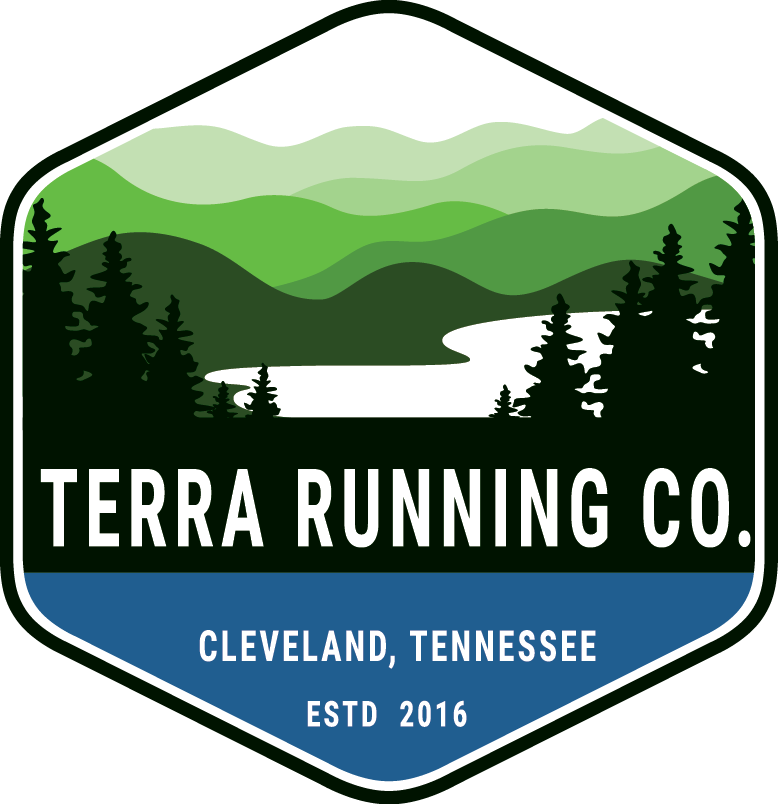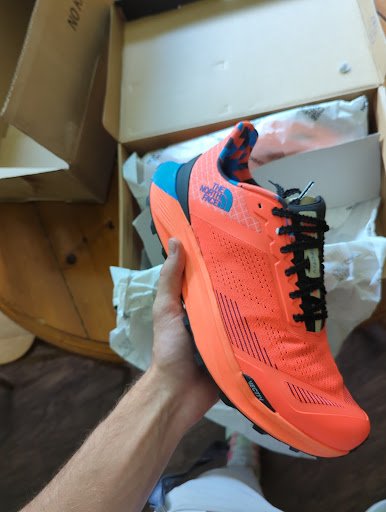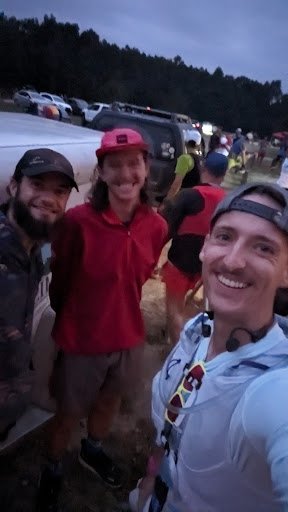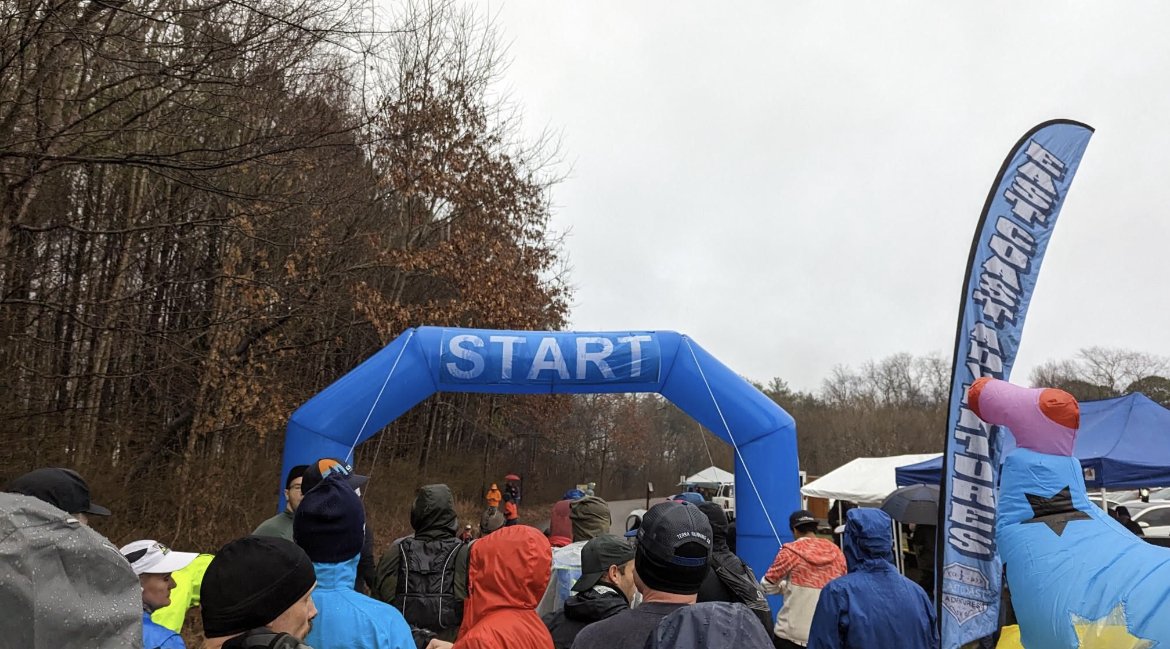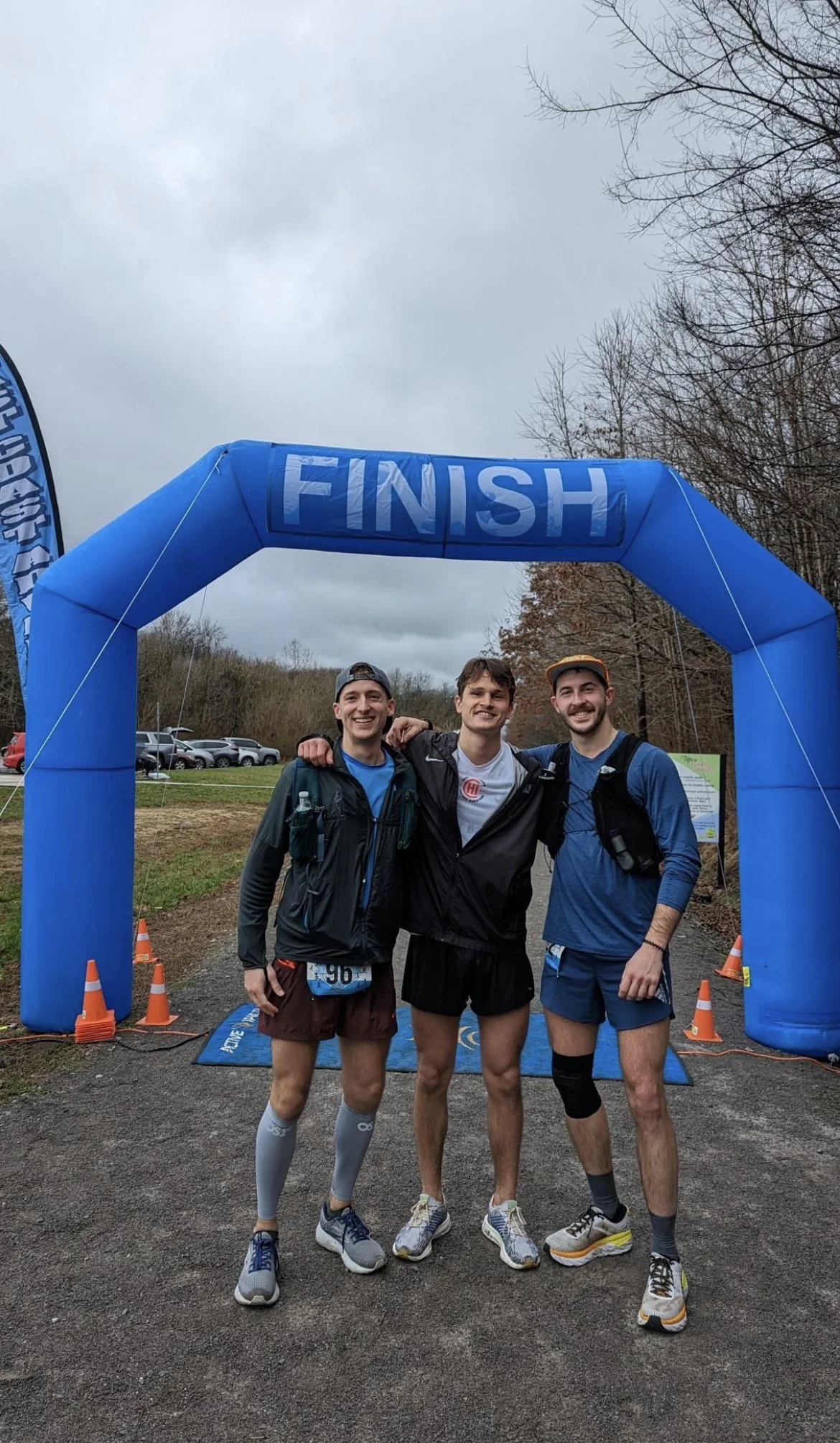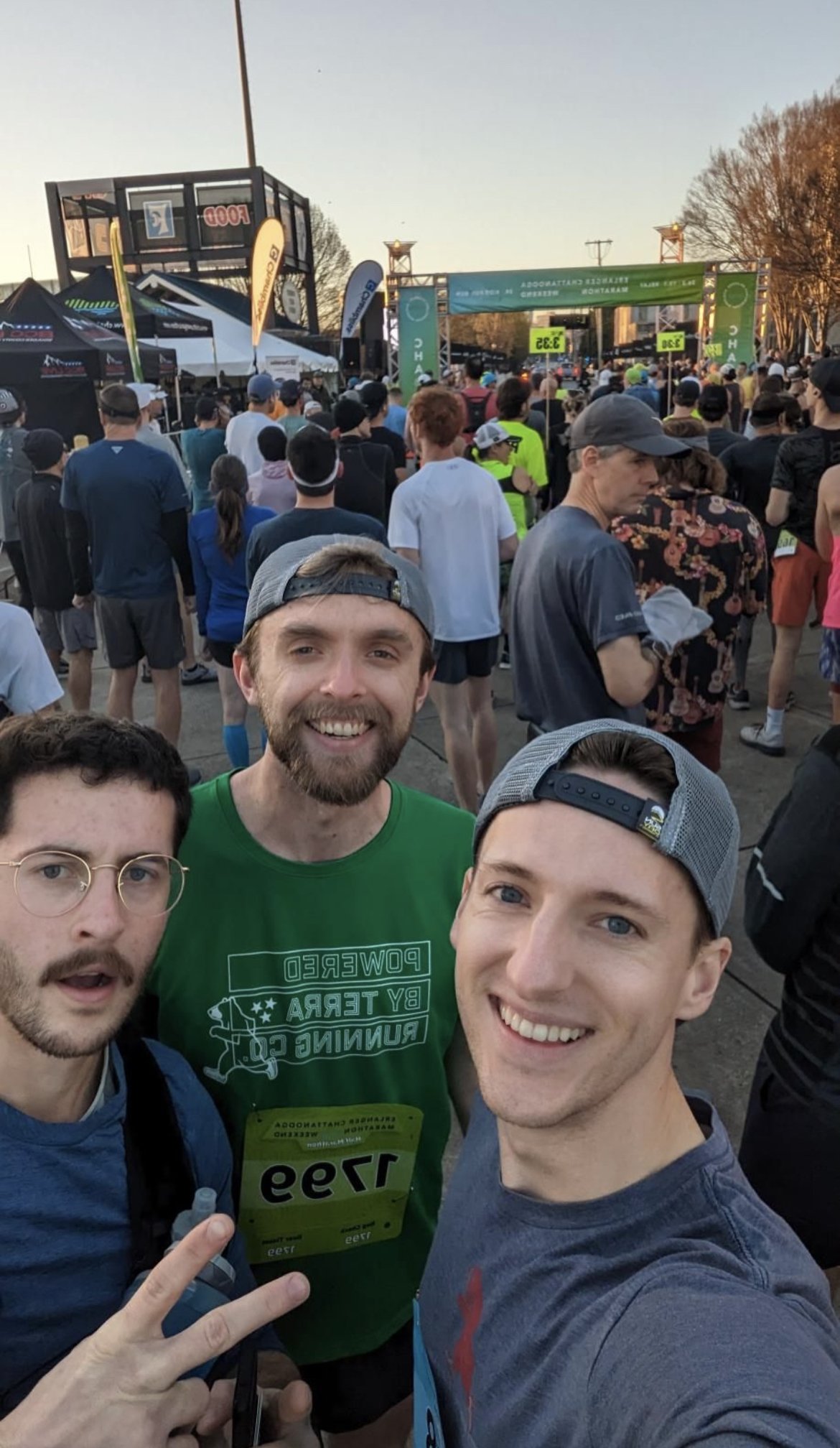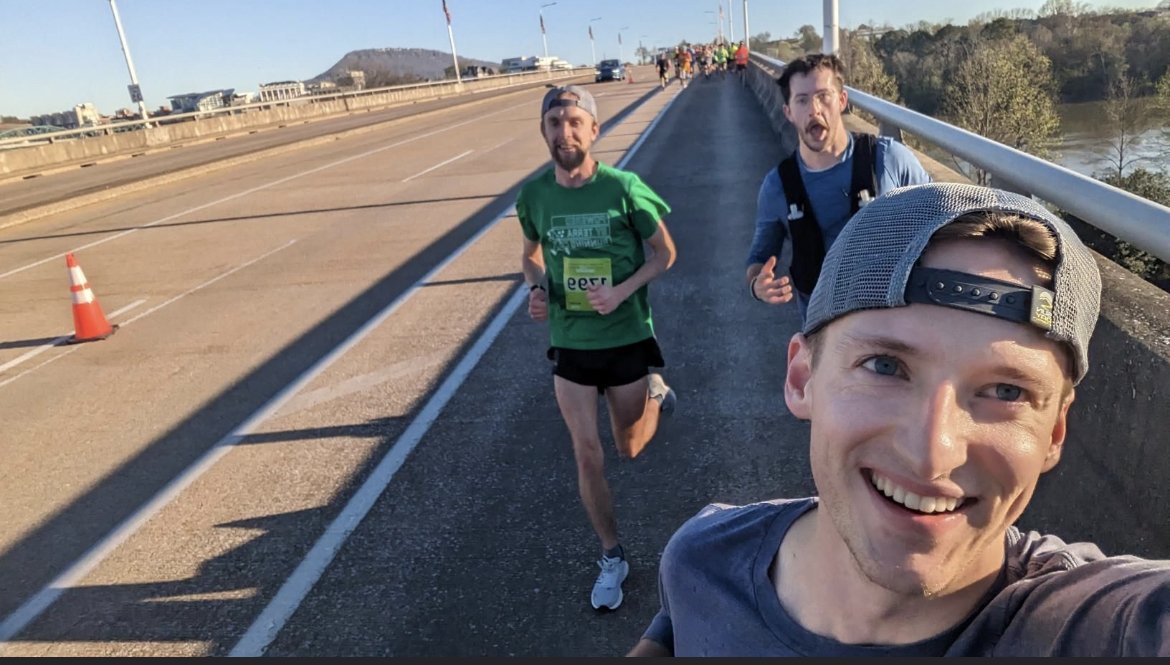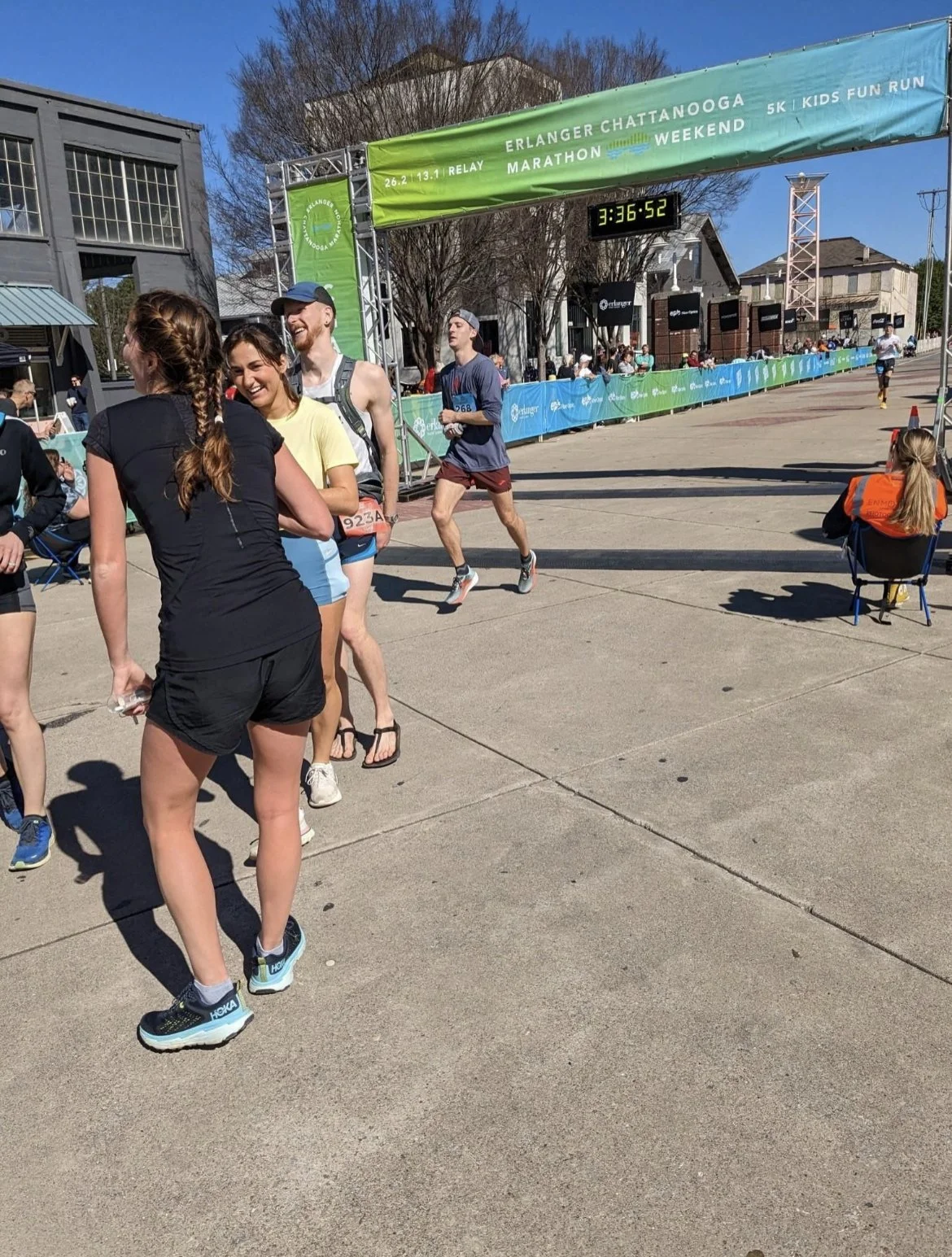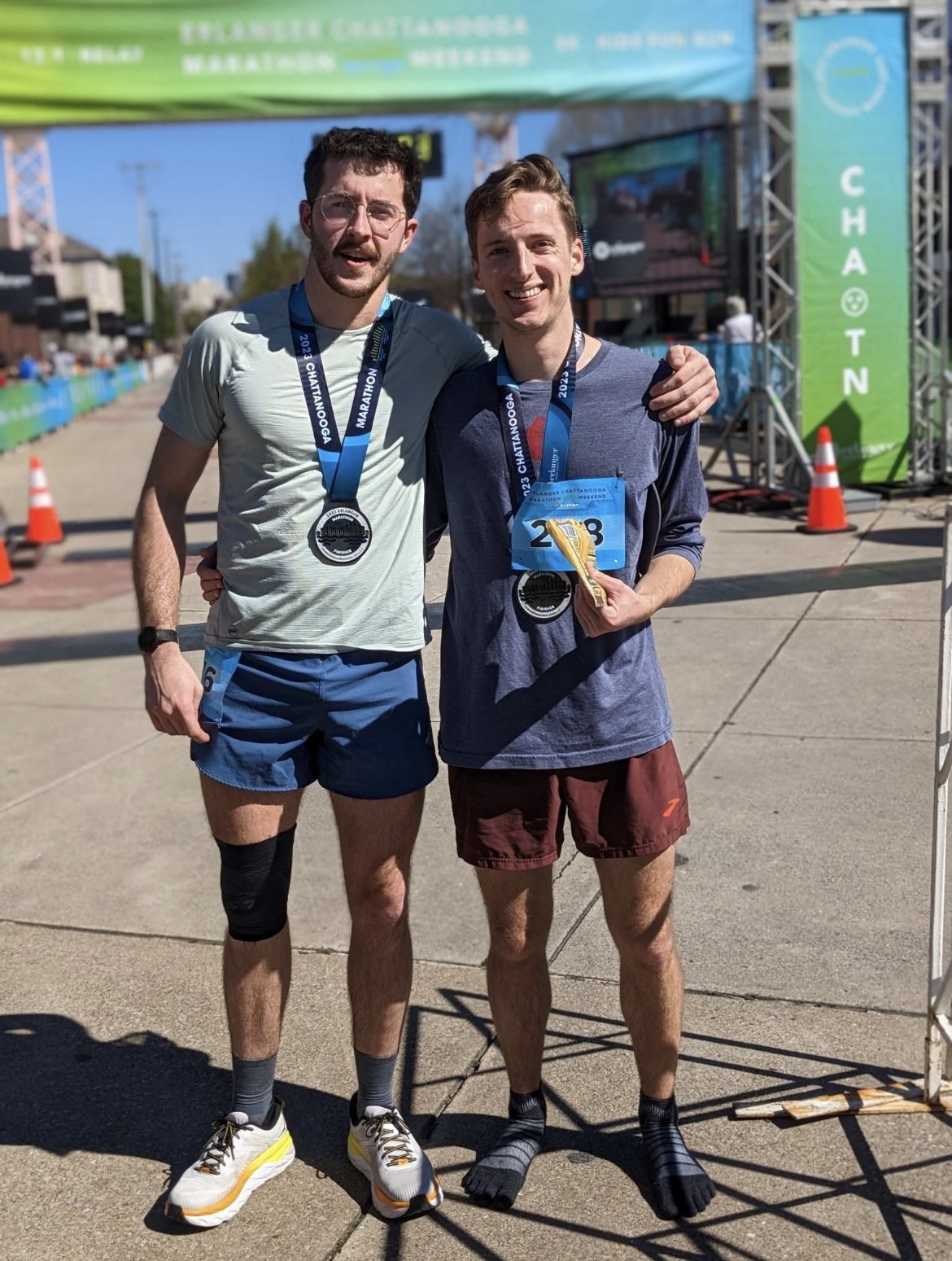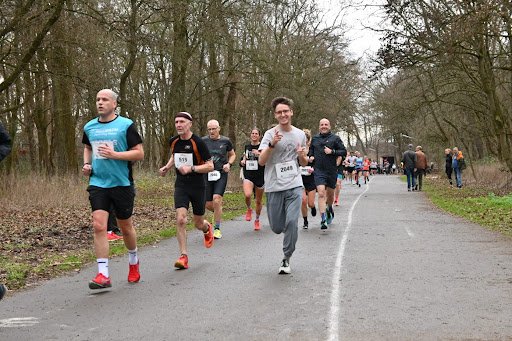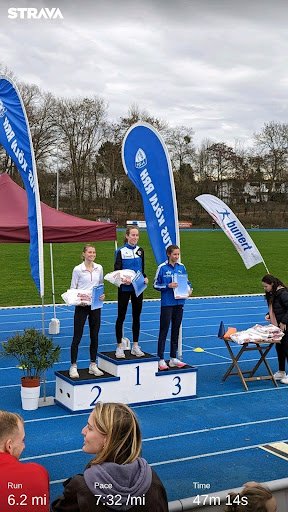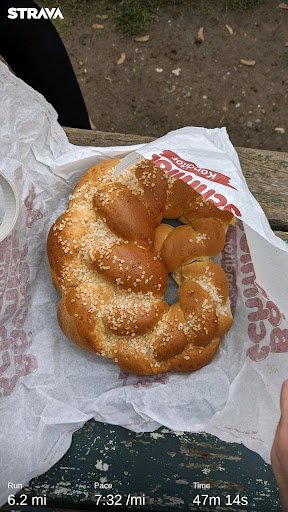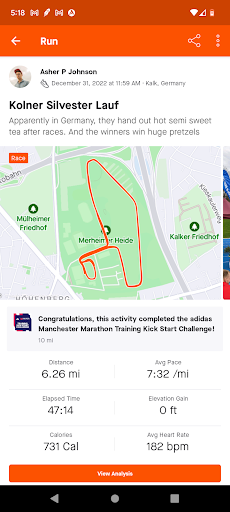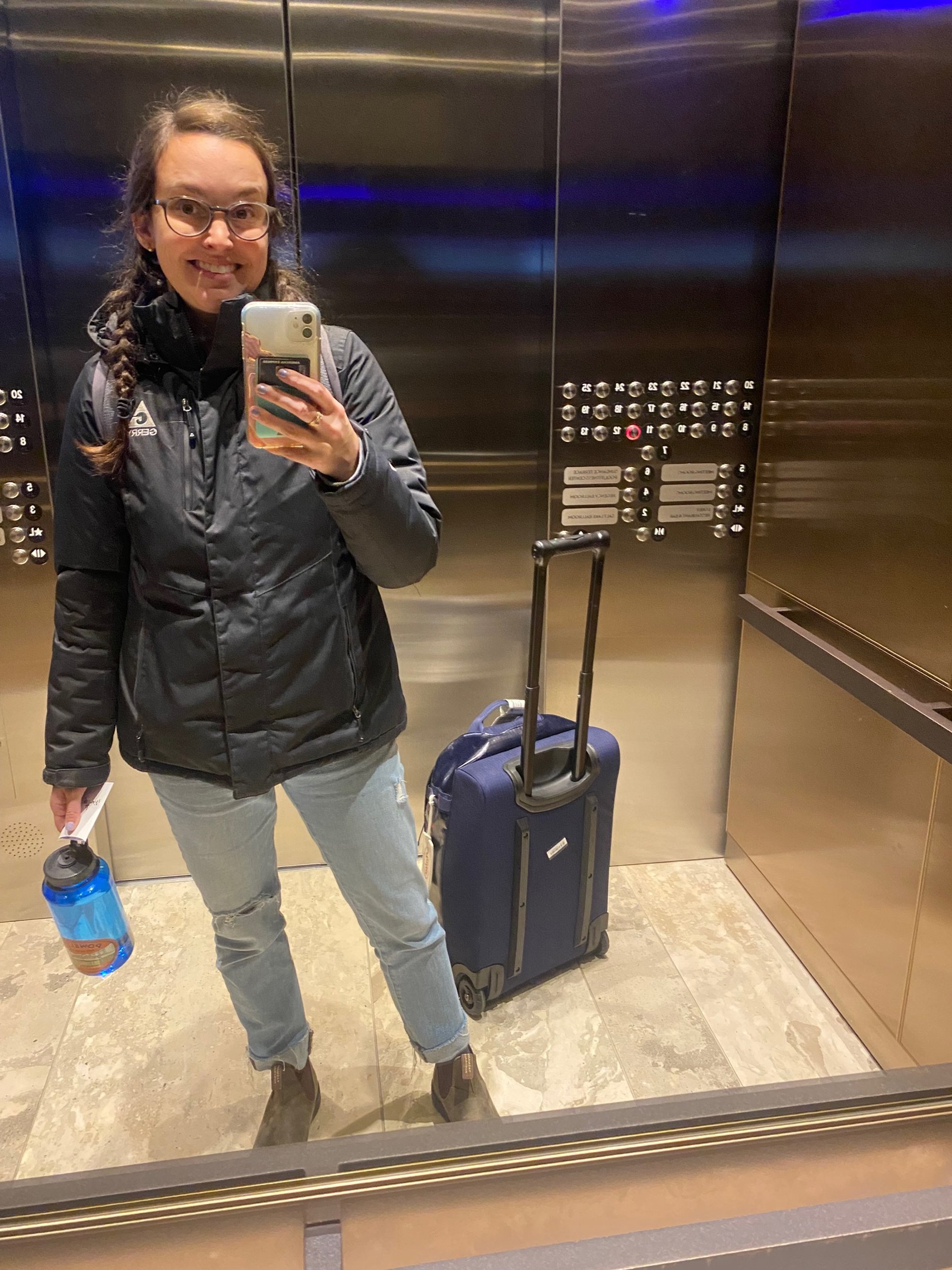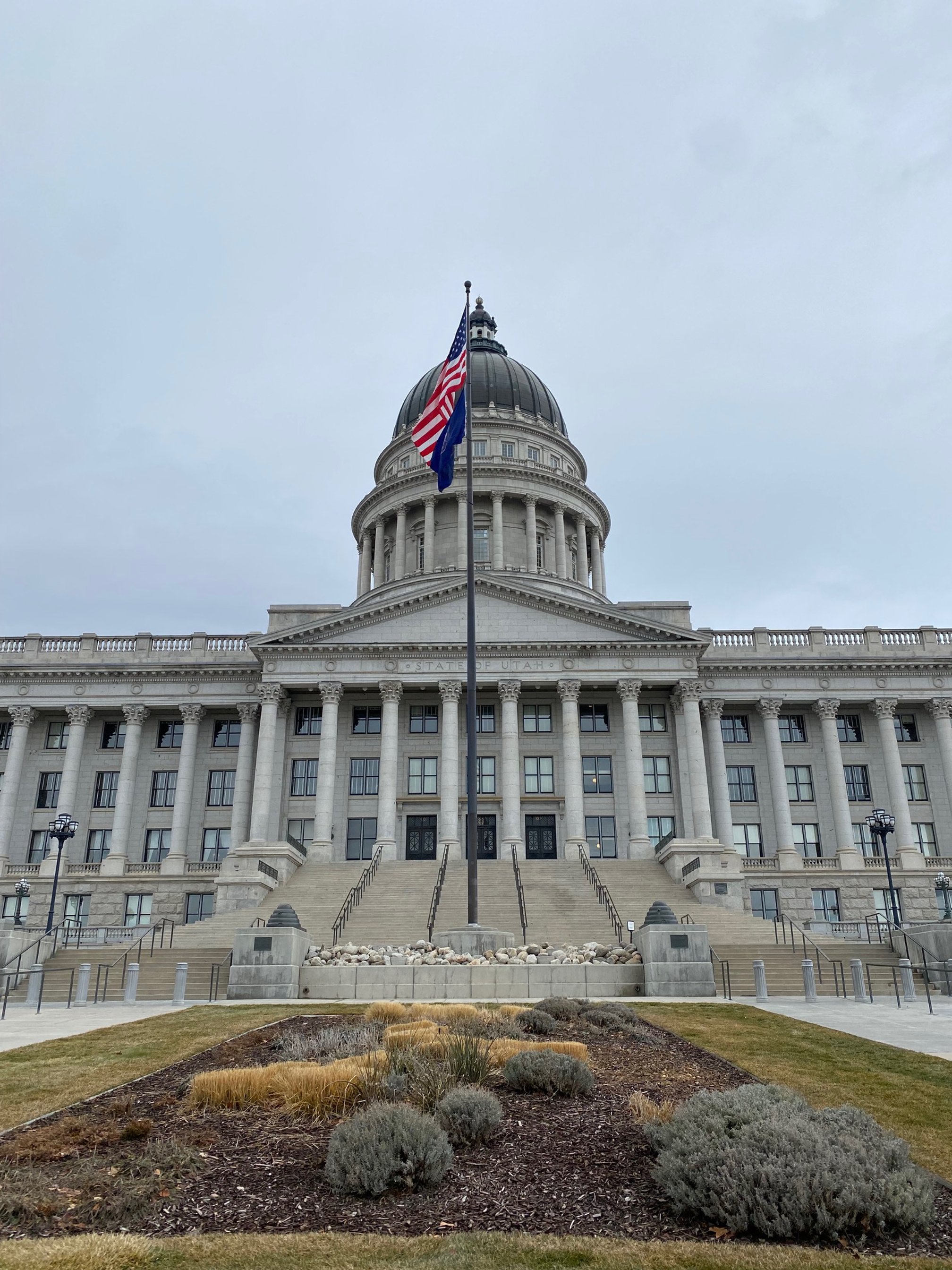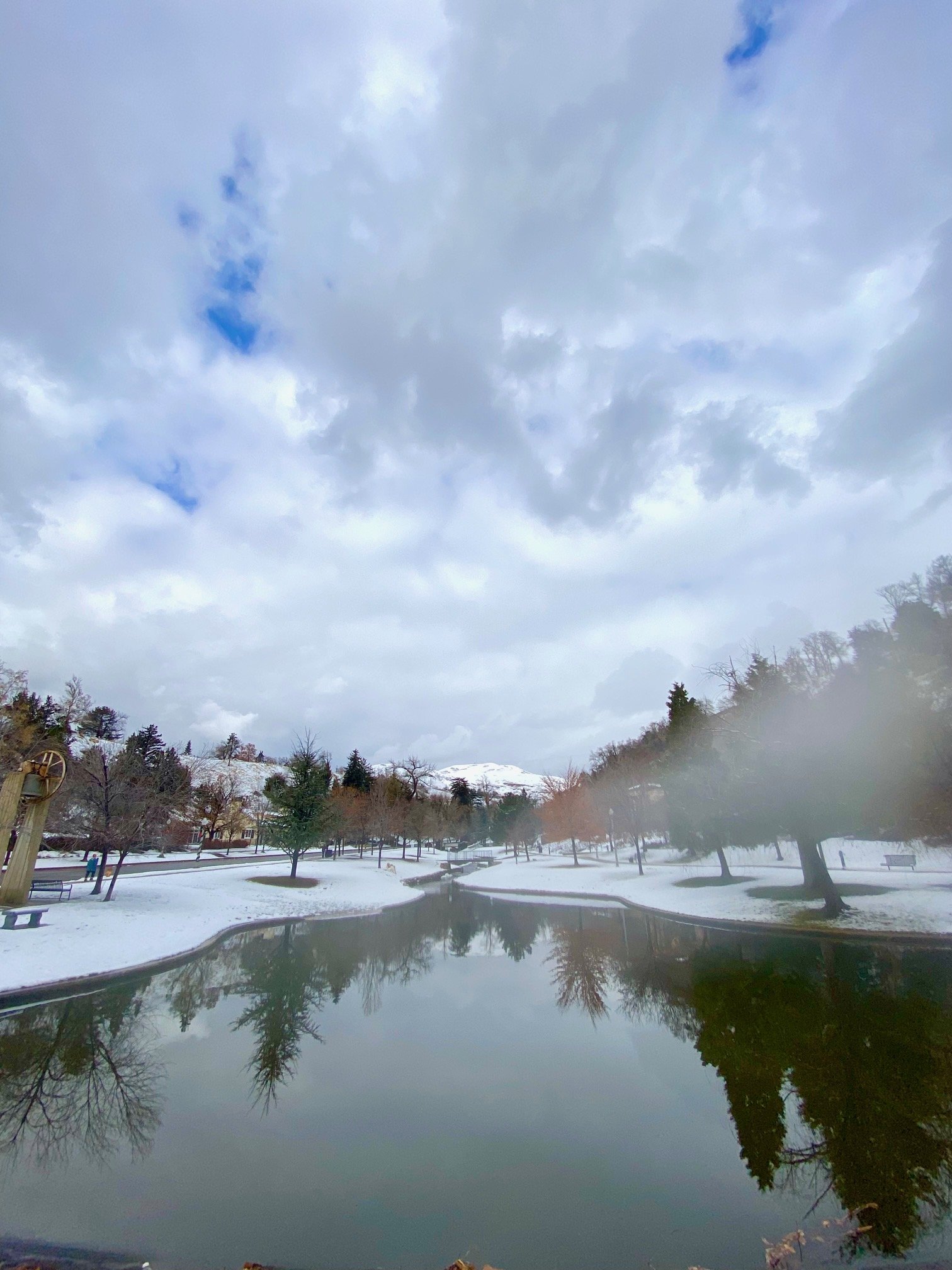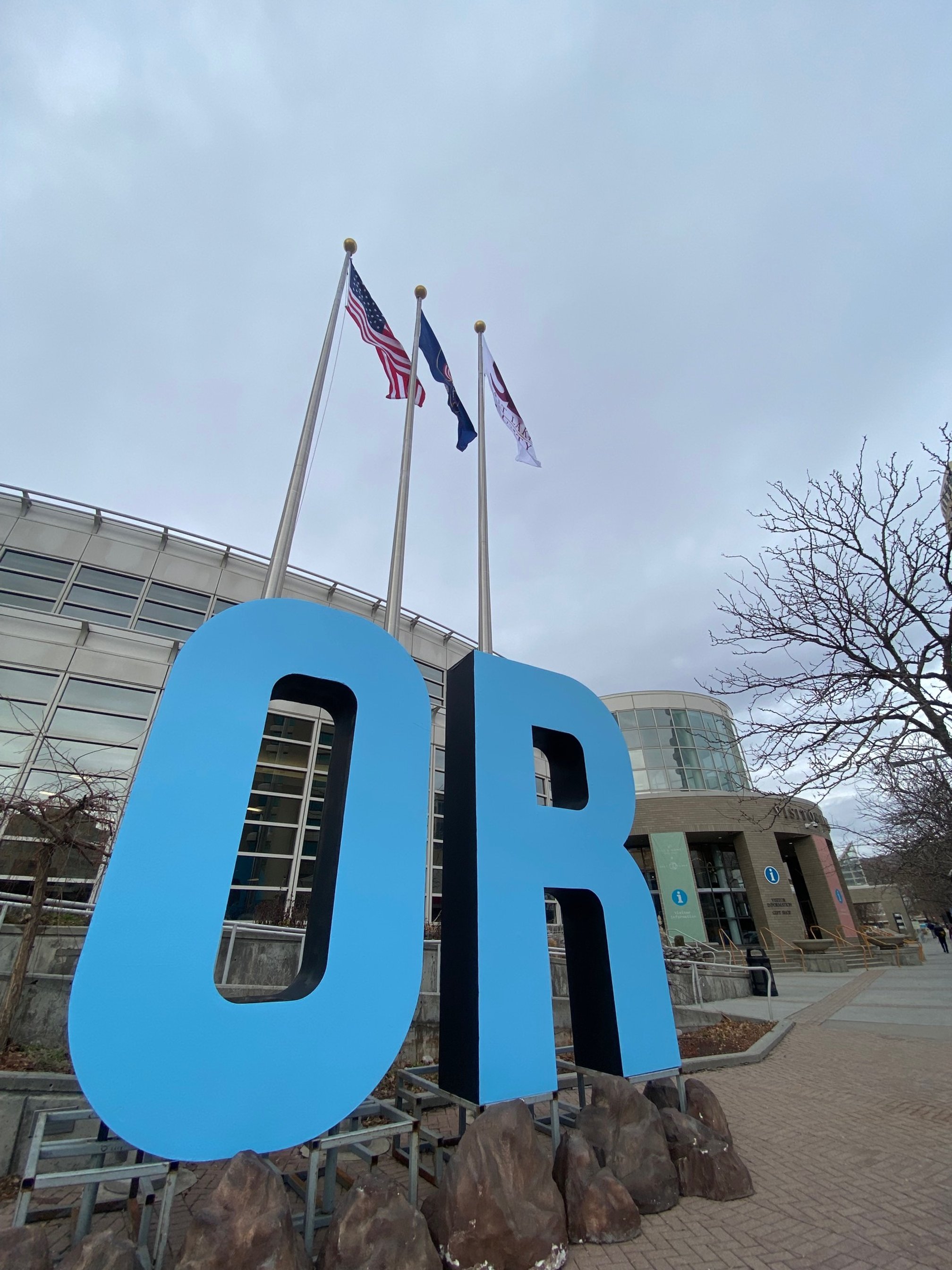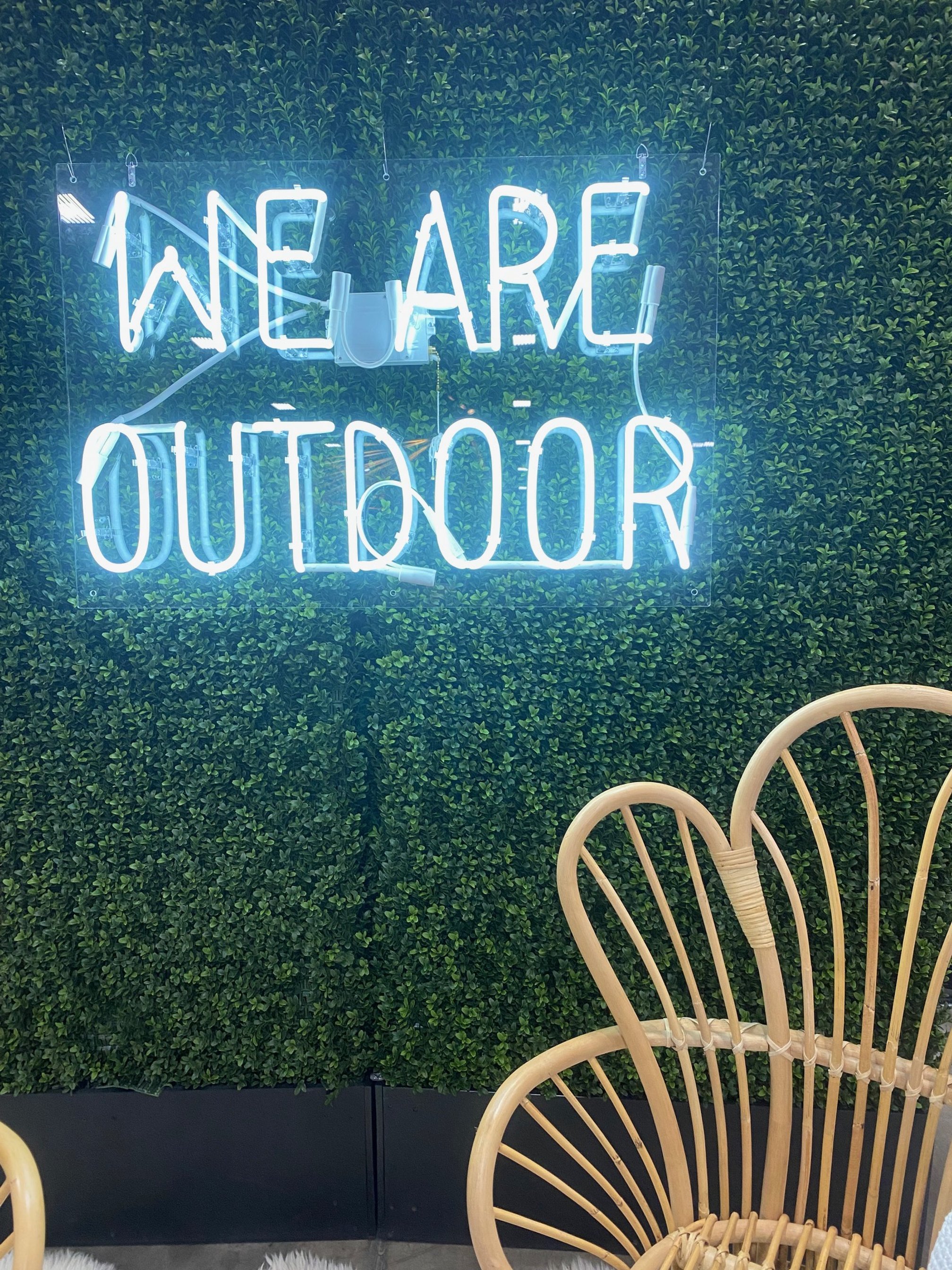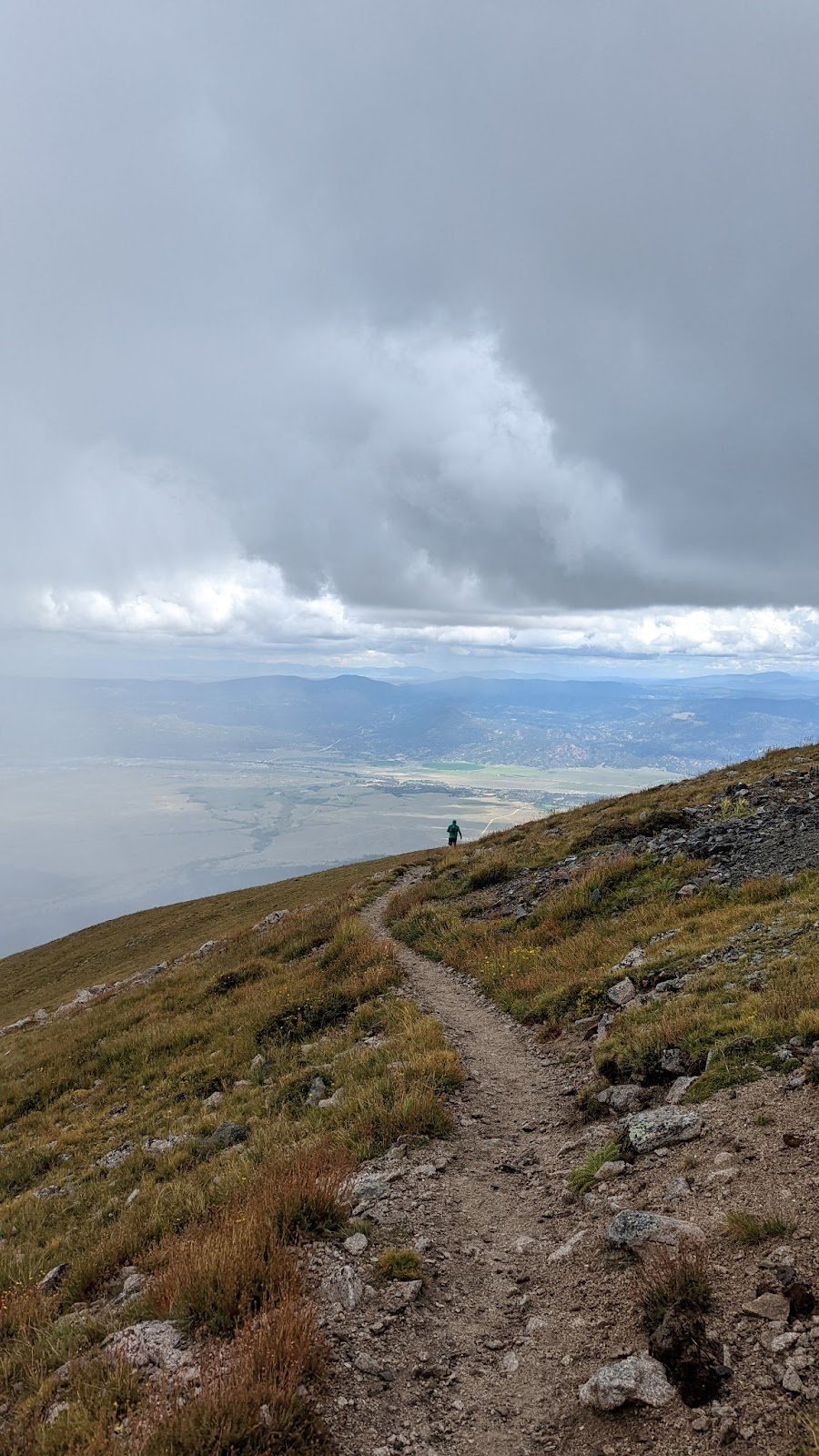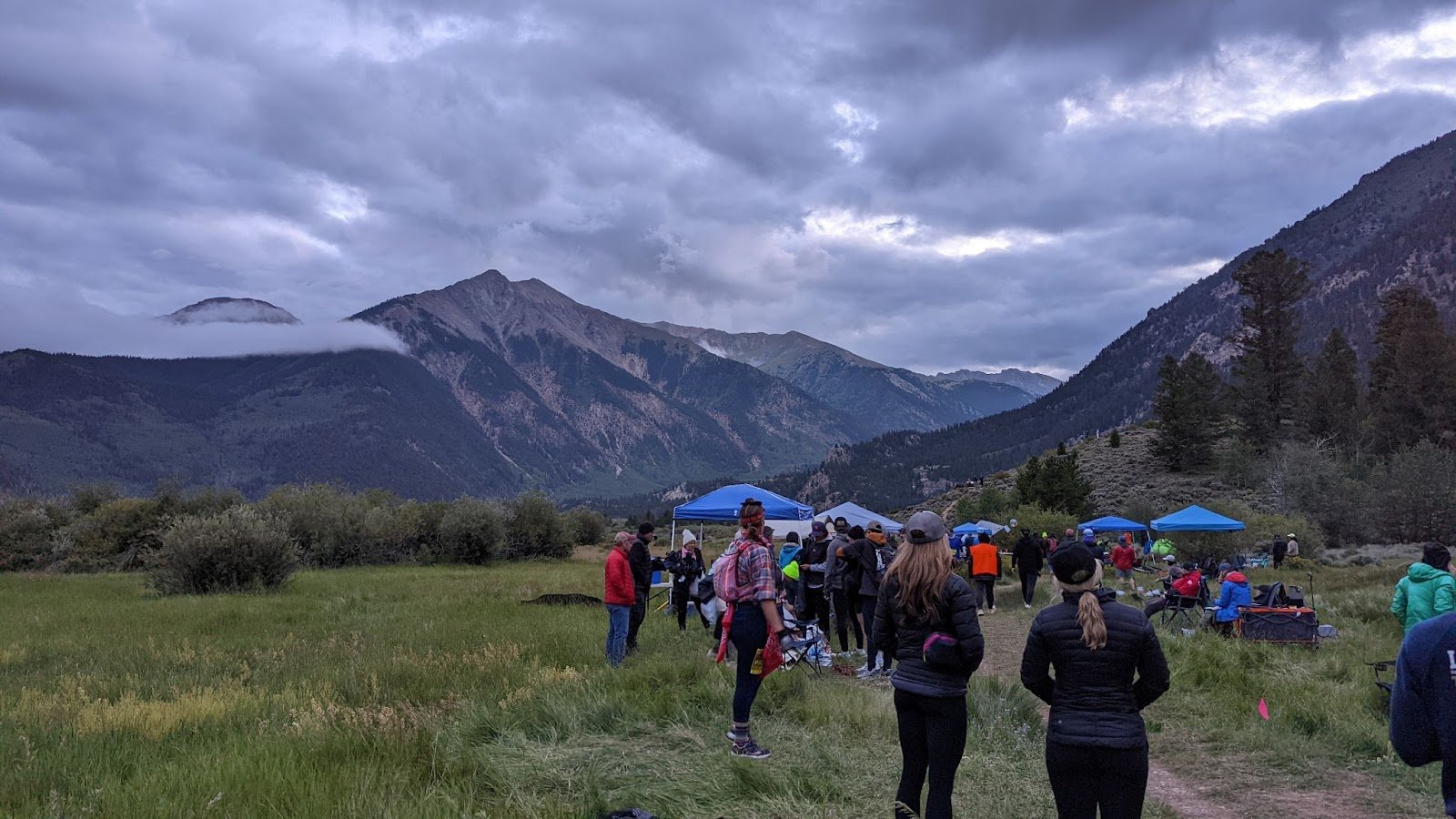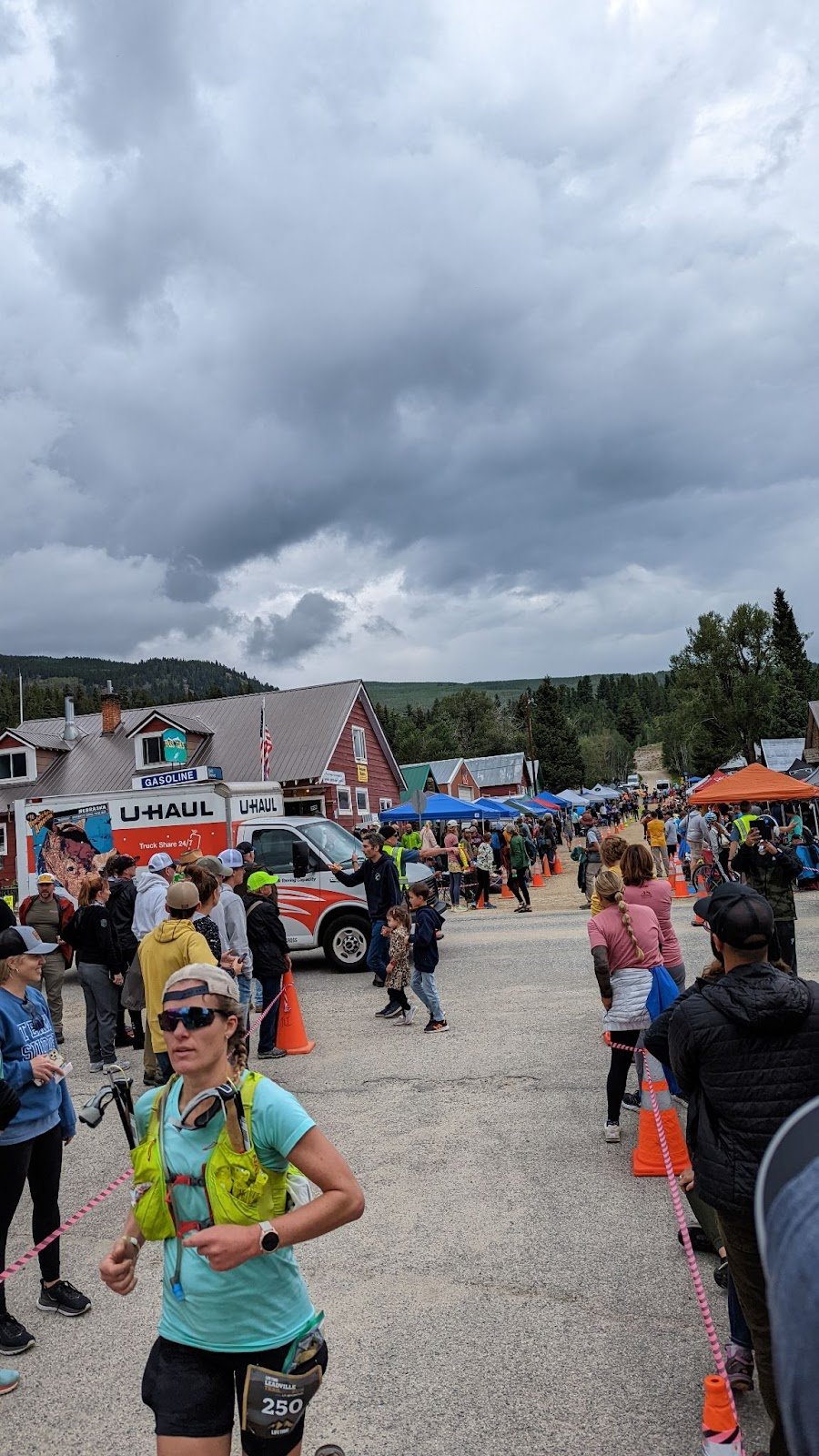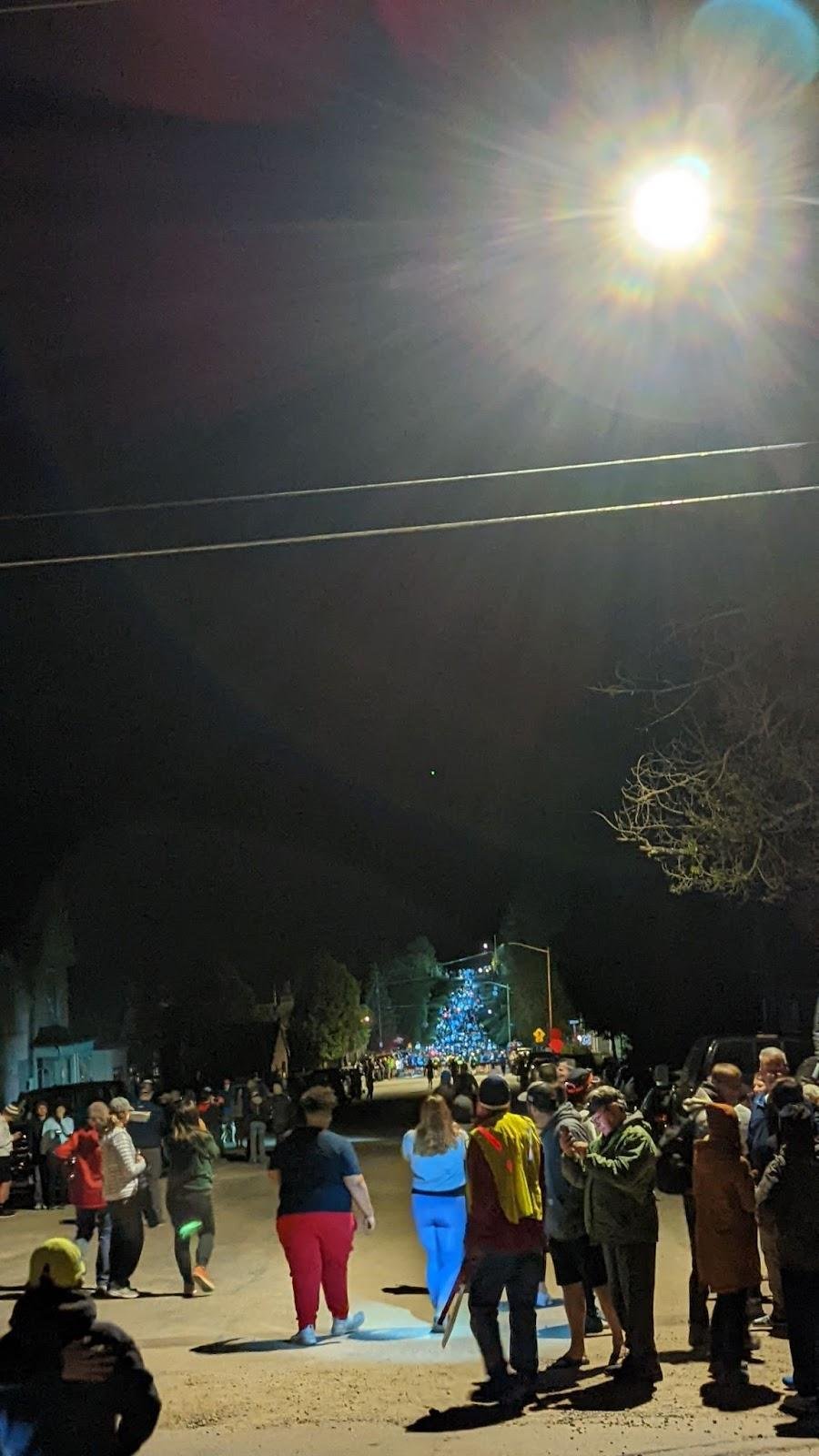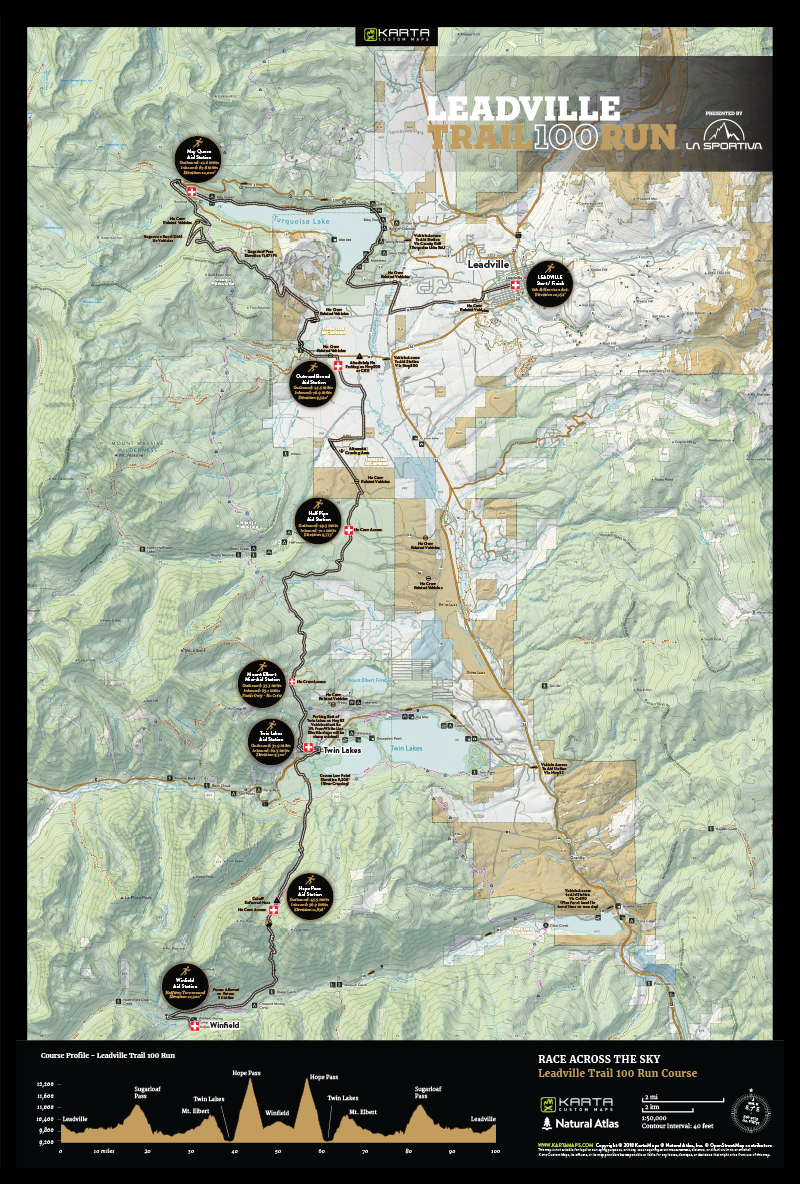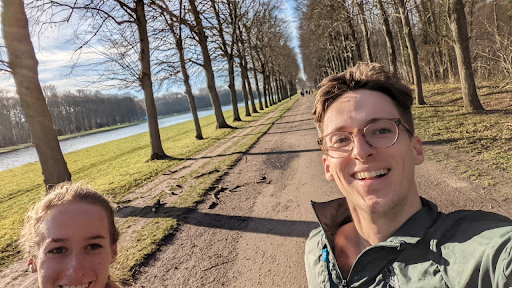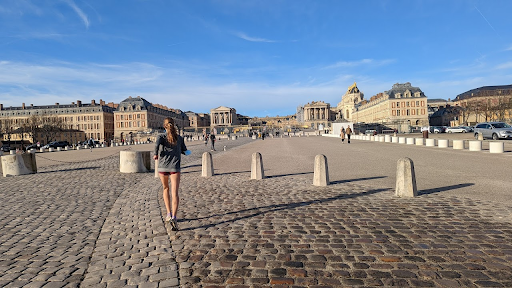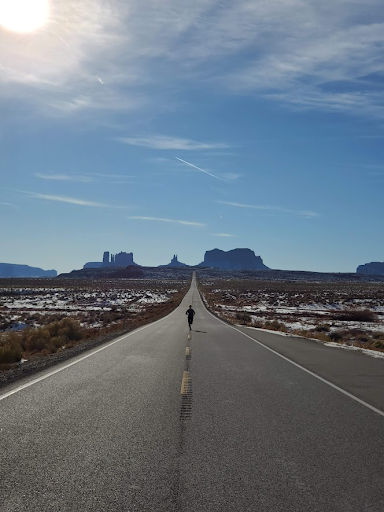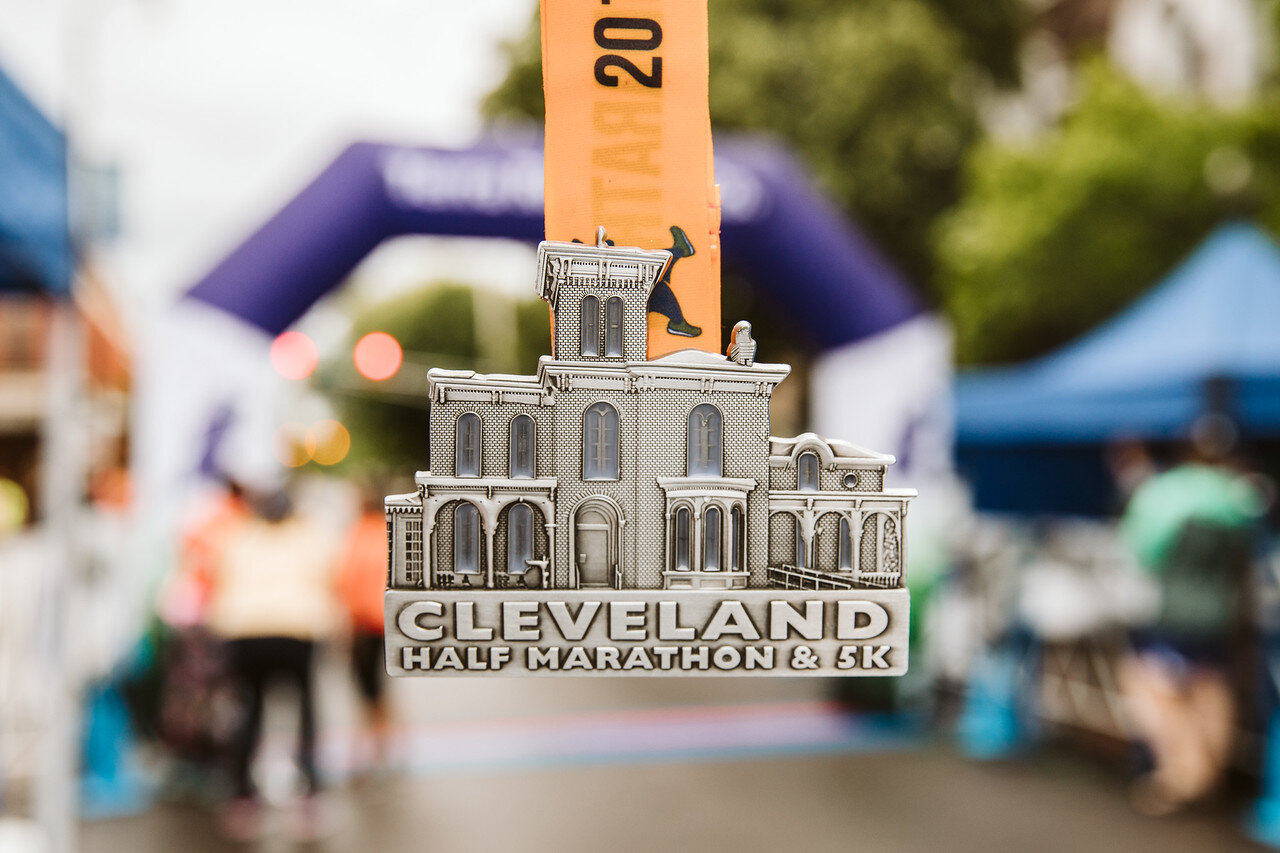
Begin Again
Have you ever experienced a moment of burnout? Have you ever noticed that the things that you used to like no longer bring you as much joy? Perhaps this has given you the urge to start something new, but you're scared at the thought of being a beginner at something again? Or maybe you simply do not know where to start?! Well, the good news is you are not alone!
Recently, I experienced a huge moment of burnout, leading me to want to start something new, in my case running. Embarking out into the journey of running looks, sounds, and is a bit frightening, however; it is not too late to begin the journey.
Over the course of last week, I started this journey with a mile's worth of interval training and making an appearance at our Terra Trot group run to connect with the running community. Even though the start was slow and there were frustrating moments, last week was so much fun!
In the case of beginning a running journey and not knowing where to start here are some of the tips I have personally found helpful!
Find a time of day that is most refreshing for you.
Search for locations where you feel safe and can enjoy the scenery or views.
If you can, find a community of runners and make new connections.
Start slow! Even if it feels like you will get nowhere, interval training is a huge help.
Make a training goal, no matter how small it may be. The goal provides helpful motivation.
Find a training plan that you can be consistent with. A training plan will give structure while you are new and as a bonus, you will be able to see how far you have come!
And finally, just enjoy the journey and have fun! It may be mentally hard to be a beginner at something again, but you will grow and achieve all of your goals while gaining something new to look forward to. There are so many active and fun hobbies to choose from: hiking, biking, fast walking, roller skating, weight training, swimming, paddling, and running ... which one will you become a beginner at?
Update: Since writing this blog post in March, Dara has already completed her first 5k!
Starting to Run Backwards
For most people, before they begin their running journey they have some sort of desire to actually run. First, they decide they want to “get into running,” and then they might do some research. One might find a good cardio workout for beginners and find shoes that will best benefit them. This is great and typically a beautiful progress to becoming an avid runner. This is not my story.
When I got hired at Terra Running Company, I was not a runner and had no intentions of becoming one. Therefore, training was a little more difficult. I had to start from scratch, so I started with Skratch, and I will say their cookie mix is delicious. On a serious note, I tried on roughly 26 pairs of running shoes, becoming hyper-aware of every detail and feeling. I’ll be honest, this made my everyday shoes feel a little less comfortable. I needed to know what each shoe felt like in order to sell them. Although I was not going to run in them, other people would, so I needed to have knowledge even without much experience.
As I continued to learn about shoes, I learned about the importance and benefits of nutrition, socks, accessories, and running in general. I now spend many hours a week talking to runners about what suits them best, mostly pertaining to shoes but also their likes and dislikes surrounding all things running.
Since starting at TRC, I have loved getting to know my coworkers, regulars, and new customers. I have seen the joy people get from putting on a good shoe after so long without one. I have seen the excitement people get when running with their friends. And I have seen the satisfaction received by finishing a race. This has been inspiring and encouraging. Mary Lou Kownacki has a quote that states, “There isn’t anyone you couldn’t love once you’ve heard their story. ” I often think about this quote when dealing with others, but uniquely this has been true for me pertaining to running. I learned so much about running and runners that I have started to run myself. I used to make the joke that if you saw me running you should run too, because there would most likely be something chasing me. Now, I will quote some Terra gear and say, “Run for your life,” and I will do so happily. For now, I’m off to jog on the Greenway…
A First Race Experience
Last weekend I ran in my first-ever race, the Two Bridges 10K in Chattanooga, TN. I wasn’t sure what to expect regarding my performance since my average run normally is around 3-4 miles long and I’ve just been coming off an injury over the summer. My goal was to finish in under 50 minutes, which I felt was pretty doable. I ended up finishing in just under 50 minutes! I was surprised by how cold I was after the race. The weather was around 52 degrees and overcast. I also continued to get more and more tired throughout the day. I enjoyed running with other people and loved the race experience overall, except for the early start.
After the race, I had a few thoughts about what I would do differently next time to prepare for next time. In retrospect, I did not eat or drink enough the day before to fuel my body properly for the race. Next time, I will try to be more conscious of my food and drink intake as well as drink some electrolytes on race day. For the 10K distance, I also wish I had pushed myself a little more at the beginning of the race. I was cramping pretty badly around mile 3.5-4.75, but before this and after I felt great and could have run faster. Running in this race has inspired me to run more and to challenge myself physically and mentally.
The Journey of Recovery
Recovering from an injury and returning to previous activity levels is a frustrating process.
In June, I sprained my ankle playing a casual game of soccer. I had sprained my ankle multiple times before, all of which were pretty low-maintenance incidents (just ice and walk-off). Unfortunately, I had a sinking feeling that this time would be a lot worse. My fears were confirmed when a couple of weeks after the injury, my ankle was still bruised and swollen. So I (with the help of my friend) decided I needed to go to a physical therapist if I was going to return to the level of activity I was accustomed to. I genuinely believe I would not be where I am today in my recovery if I had not gone to PT. Through those first couple months of physical therapy, I was thankful I was beginning to heal and regain strength and function while also mourning the reality that I still could not run with my friends, rock climb, or play tennis.
I ran my first mile the second week in August. I was excited but knew I still had a few weeks to go before I would be able to run without pain. A couple of days after that first mile, I tried to run but realized the discomfort was too much, and I would just be hurting myself by running, so I stopped. This “almost-but-not-yet” was difficult. I had spent two months without the exercise I loved and did not want to keep waiting. I started biking occasionally during this time, which carried me through the few weeks of only being able to run once a week. Finding another way to get outside and be active felt so good!
At the beginning of September, I finally reached the point where I could run without ankle pain. I was so happy (and still am)! Throughout the past month of attempting to run again, my friends and coworkers at Terra encouraged me to listen to my body and try.
Recovery is not all or nothing. I had to be okay with running two miles one week and that being all I could take. The community at Terra, especially the Terra Trot group has uplifted me and inspired me to see the joy of running. Now I’m planning on running the 4 Bridges 10k in Chattanooga in October!
Georgia Jewel 50 Mile
This was so much fun! I went beyond my expectations (which were low). I anticipated walking more and feeling like I needed to stop. Thankfully I never felt this way. Initially, my legs started to hurt, which turned into only hip pain by mile 17. My stomach started to hurt badly to where I thought I might throw up or explode backside. After I took a little break with my crew at mile 30, however, I felt rejuvenated and even energized. I decided to not change shoes at that pit stop and instead only changed socks. I ate a bowl of warm ramen. This bowl of ramen tasted like heaven. I had no cramps or splints, likely because I managed to continually consume 200 calories per hour with a lot of water, and because the uneven terrain of the course reduced repetitive pounding on my joints. I was also extremely happy with my trail shoes, the North Face Vectiv Infinite. These were soft, protective, and even a little bouncy, giving me some speed. I placed 10th overall and 1st in males aged 20-29.
If I could change anything, I would have trained farther out and attempted to get more base mileage under my belt. I only had 45 mile weeks during training and my longest run was 15 miles. I also would have reduced the amount of time I spent at aid stations. I probably spent around 20 minutes at the 30-mile aid station, which ended up costing me the difference between 5th place and 10th. I did poop twice, which I do think was very necessary. Thirdly, my phone completely broke during the race, so I should have brought a waterproof bag for it.
Furthermore, this course was very grueling; the first thirteen miles teased me with an easy trail but later on there were some intense climbs and declines. There was a rock garden that was almost unrunnable, as well as a section with uneven stair steps. It rained most of the race, and I was constantly worried about losing the trail as there were many forks in the trail and side routes. The last quarter mile presented two incredibly steep hills which felt like an additional three miles.
This was my first 50 miler and I definitely hope to run more. I would like to attempt the Istria 100km in April for my next big race.
A huge thanks to all of my support, especially Andrew, Jared, Kyle, and Jon.
Try a tri
Since 2021, I have been dabbling in the sport of triathlon. I have been a runner since I was in high school and have completed over 40 half marathons and 5 marathons, but I found myself getting tired of running. After years in the sport, it's easy to get into the habit of comparing time and fitness levels to yourself from fitter or faster phases of life. I liked the idea of trying new sports and being active without running the same routes over and over again.
I had a road bike from a decade ago. I pumped up the tires, dusted off my helmet and took it on the roads of south Bradley County. I was hooked! Anyone who has gotten into cycling knows there are endless accessories and gadgets to make the sport more interesting and fun. I enjoyed trying new cycling shorts, figuring out which of my sunglasses I preferred riding in, and getting my clip pedals and shoes out of the closet. Cycling is more time consuming than running and requires a little more planning. I usually drive to a location along the route of rural roads I like to ride and have to bring all my bike bottles, nutrition, helmet, bike pump, etc. I do like that it doesn't pound your legs quite like running does. It is also easier to do in the heat of the summer because the speed provides some cooling winds.
Like cycling, I had experience swimming but hadn't been in a pool to swim laps in years. I joined the Y and started swimming as much as I felt like I could. At the beginning, I didnt have a great sense of how hard I was working so I would find myself stopping after a few lengths to "catch my breath." When I realized I was just getting used to breathing in a rhythm, I was able to push past the few lengths and swim for longer and longer without stopping. The YMCA indoor pool is a great local resource for anyone looking to get into swimming. You can lap swim at most times of day. If you want to try open water swimming, check out Parksville Beach or the day use area at the Chickamauga Dam in Chattanooga. Always swim with a buddy and use a booey strapped to your waist so boaters can see you. Getting over my fear of "things" touching me while open water swimming has been one of the most fun parts about discovering triathlon. I love being outside in the summer, so open water swimming has been a really fun new hobby of mine.
I have done the Waterfront Triathlon in Chattanooga three times. There are two distances in that race: an Olympic (1.5k swim, 40k bike, 6mi run) and a Sprint (400m swim, 20k bike, 5k run). This is a great beginner-friendly local race that I would highly recommend. After feeling confident after my first Olympic distance triathlon at the Chattanooga Waterfront Tri, I signed up for Ironman 70.3 in August, GA in 2021. I really pushed myself to bike and run more than I ever had in training. It was a big challenge and I really enjoyed the accomplishment! I am going back to do it again next month, September 2023.
As much as I have loved trying new sports and challenging myself in new ways, I have missed the grind of running more miles each week. I have had to cut back on my running miles to keep my legs fresh enough to cycle three times a week for triathlon training. After this half Ironman in September, I am looking forward to getting back to my first love: running.
Running the Ultramarathon before the Marathon
In what follows I will share my experience training for the Gone Loco 55k and subsequently the Erlanger Chattanooga Marathon…
For context I returned from my travels in Germany on January 12th. The Gone Loco was scheduled for February 12th and the Marathon was March 5th. After recovering from jet lag, I had less than four weeks to prepare for an ultramarathon. I ran some in Germany (see my previous blog), but nothing longer than an eleven mile run and my weekly distance was no more than twenty miles. So I ramped up my training with an increase in the amount of my runs. Running consistently everyday with two break days a week and a long run on the weekends helped to considerably improve my fitness even in a short amount of time. My long runs never went longer than eighteen miles, however, on the first weekend of February I ran back to back long runs, eighteen on Saturday and sixteen on Sunday. The Terra Trot was especially helpful to my training because it simulated a hint of the ultramarathon experience: breaks every few miles and a slow and steady pace. The week before the ultramarathon I only ran once, a little 3 miler. Day of, my two friends (who I convinced to run with me) and I headed up to Athens. We had not run the course before and only heard that it was flat and graveled. Indeed this 55k course is likely the flattest available. Physically, we each felt underprepared, so we took off decently slow, forcing ourselves not to get caught up with the excitement of our first ultrathon. The course lapped three times with two main aid stations at the start and turn around point. 11 miles in, I was feeling good and I stopped to change shoes. The refreshing feeling of cool shoes on my hot swollen feet felt amazing. I took a shot of fireball from the race directors and took off with a new burst of energy. I surpassed my longest run ever on that second lap, and hit my first marathon distance ever. At the aid stations stops, I paused briefly to refill my water bottle. Mile 27 was the first point where I really started to feel pain. I had never experienced a calf cramp before, but my right calf began tweaking with sharp jabs of pain every few minutes. Running back to the finish felt like a painful crawl, but I committed to not walking. Hobbling, I made my way back towards the finish. My watch displayed 34 miles and I knew this 50k race was indeed a 55k. Every .1 mile marker sign began to pass me by slower and slower. I started to heavily favor my left leg as my right leg cramped more frequently, but mentally and physically I had not bonked. I pushed through and made it to the finish line. The last stretch, with the finish line in sight, I actually increased my speed to a full run. David Kyle caught me as I blew into the finish. My friends and family were all there smiling as I teared up every so slightly, and felt the wave of shock rush through my now halted body that had been running for five hours and seventeen minutes. I watched my friends finish soon after me, listened to their similar experiences of pain and suffering but utter joy at the accomplishment.
Three weeks later, I was at the start line for the Erlanger Chattanooga Marathon. I had run roughly five times since the 55k. I had a new pair of shoes, made specially for a faster marathon, the Brooks Hyperion Max, one handheld water bottle, and 8 nutrition gels stuffed into my pockets. This would be my first official marathon. Unlike the ultrathon, I told myself that I would not walk at all, not up hills, and not at aid stations. In fact, probably unwisely I did not use the first few aid stations I saw. The race started with the half marathon runners, so it was crowded and quick. I tried to keep a slow pace at the beginning but ended up going around an 8:30 pace because of the quick flow of runners around me. Brennan, my fellow Terra twin, was with me, running the half-marthon, and Dillon (who ran the Gone Loco with me) was doing the full. Dillon and I were separated around mile seven, however, he stayed relatively close behind me. He was close enough to see the 3hr 40 min pacer and I make the wrong turn at mile 14. My watch started buzzing, and I looked down to see that Dillon was calling me. I answered and he, panting, told me that I had cut off two miles of the course by making the wrong turn, and I, huffing back, argued that the pacer was with me so that it was not possible. But sure, enough, I passed the mile 17 marker and I was only at mile 15 on my watch. So, begrudgingly, I turned around (the pacer and two other runners decided not to turn around, but I did not want to risk cheating). I ran back to a timing mat checkpoint. There was a worker there to whom I explained my situation, while running. I told him I would make up my distance in the parking lot behind him. So, I ran two miles in a hotel parking lot and showed him my watch once I was at 16.8. I continued on, still ahead of Dillon. This was a big setback mentally. I was a bit angry at the pacer for taking us the wrong way, and sore from running tight laps in a parking lot. Nonetheless, I brightened up when I looked around. I was running all alone. I saw no one in front of me and no one behind, and, furthermore, the street ( just past the aquarium) was empty of cars and spectators. It was quiet except for my footsteps, as I climbed the hill to the bridge. I felt pain at the top of my foot at this point, which I assumed to be a stress fracture, regardless, I pushed through, slowing down ever so slightly. I called Dillon back as I ran over the bridge; I told him about my parking lot experience and discovered that he was not far behind. I encountered few runners beyond this point, but when I saw them ahead, I made it my slow and steady goal to catch them. Four miles to the end of the marathon, there was no shade and no spectators. I listened to a song I liked that matched my cadence well, and decided to play it on repeat for the rest of the race. I rounded the final corner and looked way down, probably a half mile, towards the finish line arch. Getting excited, I started to push faster, but the distance was more than anticipated. My final sprint created a forced bonk right as I finished at 3:35:30. I was really happy with my time as I had no expectations, but soon went into a fog of dehydration. Dillon came in soon after.
I ran an ultramarathon before my first marathon, and it worked okay for me. I am happy with my times, and my ability to finish with minimal walking for the ultramarathon and no walking for the marathon. Nonetheless, if I could change the past, I would have sought to prepare much more for these races and distances. Base mileage is incredibly important, and jumping into long distances without proper training can shock the body. I believe I am lucky that I had no long lasting injuries. For the future, I would like to work towards a 70k race ( I am currently looking at the Tushars Mtn race in Utah in July), but I will do so with many 40 mile weeks beforehand, instead of just the one I had before my first ultramarathon.
A New Year's Eve running adventure
I spent my Christmas holiday over in Deutschland, home of Adidas shoes, delicious baked breads, and dark beer. On New Year’s Eve, I was not where you might have expected. I was not cozy and warm at my German host’s house, nor was I embracing a New Year at a cheery Brauhaus. Instead, I was out running. It was the Kolner Silvester Lauf 10k race (Silvester means New Year’s Eve). I was still recovering from jetlag (Germany is six hours ahead of Tennessee time) and some sinus troubles, but I decided that I wanted to embrace the German running culture to the fullest. So, I paid my 20 euros for the sub-50 minute 10k race. There were four different race options: a 5k if you thought you were faster than 22 minutes; a separate 5k for those who expected slower than a 22 minute finishing time (i.e. those who wanted to have fun and enjoy their run); a 10k for the sub-50 minute runners; and a 10k for those who expected to take longer. The races were all run separately and did not begin until the previous race had finished.
I started near the back of the over 100 person lineup for the sub-50 minute 10k (I was far behind my girlfriend, Celine, who was also running). The gun fired, and I took off at a fast but manageable pace, bearing a big smile for all those taking photos on the sidelines. The course started on a track, took off into a park and then returned to the track and looped back to the park, three times. The first loop felt great, the second loop, after I hit a 5k distance started to hurt and I could feel my achy body demanding I slow down. As I began the third lap I saw the winner, almost lapping me, run through the finish at 30 minutes. I slowed down on the final lap until I was overcome by a side cramp and had to walk for a couple minutes. I was 2 km out at 43 minutes, so I geared up and braced against the pain to run out and finish at 47 minutes. Upon crossing the finish line, pylons immediately directed me into a single file line of sweaty steaming finishers. I was pale with pain from my cramp, breathing heavily, and desperately awaiting the water cup table. Expecting to quench my thirst with no more than some tap water, I was surprised to find opaque liquid in my cup. I quickly took a big gulp and almost gagged on the hot semi-sweet tea I had just swallowed. Suffering physically from the run and now mentally from the shock of drinking a hot, almost bitter tea, I followed the line of people to a food truck trailer, where I received a big, soft, warm and sugary pretzel. This was a delightful surprise after my tea, but still utterly disappointing when I realized the breadiness increased my thirst and that there was no water to be found at this track. Luckily Celine (who placed 1st for the women) spared me some water from her bottle.
I had survived the New Year’s Eve race. It was more than worth the experience, however, I still remain flustered by the remembrance of having tea and pretzels after racing. I wonder if there is something to be learned from this… maybe Terra should start giving out hot tea at races… I don’t know, but next time I will bring my own water and bananas to a German race.
TRC Travel Notes: Outdoor Retailer
In January, I had the amazing opportunity to travel to Salt Lake City, Utah for the annual Outdoor Retailer trade show. The running specialty industry is just a subsection of the entire Outdoor industry, and it was so interesting to learn more about the outdoor retail space as a whole.
Touted as the largest global business-to-business trade event serving the outdoor industry, "OR," as it's called, was definitely situated in the right city for the crowd. Salt Lake City was a great area to visit. Although I didn't hit the slopes for pre- or post- show skiing like many of the visitors, I enjoyed exploring the city on foot. I went for some really great runs around town and visited Memory Grove Park, the Utah state capitol building, and Temple Square. I think running through a new city is the best way to explore it, and Salt Lake City didn't disappoint! It felt safe, the sun was shining, and the sidewalks were wide and accessible!
Inside the trade show, I met with some new brands, as well as some familiar ones to the running industry. I was able to chat with some of the national sales managers for Qalo, an active jewelry brand, and decided to bring in their popular silicone rings to offer at Terra Running Company. (They even custom engraved a dog tag for Rocky while I was there!) Another brand I was excited to meet with was Klean Freak, a husband and wife team who created a great individually wrapped, natural body wipe perfect for post-run or workout. I am always on the hunt for new, unique brands to offer to the Cleveland community, and Klean Freak really impressed me! We now offer all of their body wipes in the store and they've quickly become a staff favorite.
In addition to the trade show, there were tons of education sessions I attended. From learning about trends in the outdoor industry from 2022, to mastering social media marketing, I came away from OR with tons of new ideas for our team to implement!
Overall, the chance to attend Outdoor Retailer was a huge win for Terra Running Company. We strive to stay on top of industry trends and bring our customers the best brands on the market, and OR was an awesome chance to continue toward that goal.
My First Ultramarathon Experience: The Leadville 100
August 18th I boarded my $30 one-way flight to Denver. I carried a tightly stuffed “personal item” backpack with my On Cloudultras tied to the outside. I had packed as lightly as possible to get the cheapest possible ticket from Knoxville. Andrew, a close friend of mine, was traveling with me, and we were both full of excitement for the adventure that awaited us. The Leadville 100 mile race is a famous trail ultrathon that traverses the Rocky Mountains in central Colorado, running out from the small town of Leadville (elevation 10,000 feet) into the mountains surrounding Mount Elbert all the way to Winfield, Colorado just farther than Hope Pass ( 12,500 feet) and then back to Leadville. Andrew and I were recruited by a runner friend of ours to crew for him during the course of the potentially 30-hour race. The Leadville 100 is well-known throughout the Ultrathon community for being a challenging high altitude race. It was originally one of the first ultrathons in America, and now it remains one of the most popular. Over 700 runners started the race this last August; only a little over 300 finished. Due to its popularity runners have to enter through a lottery system that makes it a little difficult to get in. Typically, runners will recruit teams to crew for them at the aid stations. There are four main aid stations along the course, Mayfield, Outwardbound, Halfpipe, and Twin Lakes. There are other aid stations but these four allow for the most crew. The there-and-back course is the hardest in between mile 43 and 56. This section forces you to climb up Hope Pass, descend down into the valley beyond it, turn around, and climb back over. The fastest runners can rarely pace faster than a fifteen minute mile on these climbs, and the average runner hopes for a forty minute pace. The Twin Lakes aid station is thus one of the most populated aid stations and the most essential for runners, as it is the last stop before the climb outbound and the symbol of achievement inbound. If they can return to Twin Lakes before the cutoff time, they most likely will finish the race. Every aid station has certain cutoff times, where if runners are even a few minutes too late, they will be unable to continue on.
The elevation map shows how difficult the climb and descent is between Hope Pass.
The race began at 3am Saturday morning. The air was chilly but the atmosphere raged with excitement. Runners gave hugs to their crews and lined up in the downtown strip of Leadville. I stood a quarter mile down from the starting line, heard the shot, and watched as the huge mass of headlamps moved towards me in the midst of cheers from the crews. Several minutes passed until all 700 runners had gone by. Andrew and I, with the rest of the crew then loaded back in the car and took off towards Turquoise Lake where we could see the runner headlamps making their way towards the first aid station: Mayfield. Our runner kept on his pre-planned pace and was feeling good when we saw him. The aid station, however, developed a traffic jam of runners and so he waited in a line of runners until seeing us. He took off after the brief stop, making his way up a ridgeline and then descending back down to the Outwardbound aid station. He sped through this one, making up lost time from the earlier aid station. He reached the Twin Lakes aid station around 12:30. This is by far the largest aid station, and a city of tents formed around the trail so that it felt like we were a part of a festival. There was the constant sound of cheering from crews and spectators shouting “good job runner!” There were a variety of sponsor tents from brands like North Face and On. Some of these brands had pro runners competing in the race. Multiple times a runner would come in and immediately a videographer would begin interviewing them. Sometimes crews would prepare meals for their runners. I saw a runner eat a large bean, corn, and rice burrito, others had soup or even chicken. One runner came in, sat down, smoked a cigar, drank a beer, and then kept running. Some runners did not have crews and relied on the bananas and pizza at the aid station. One runner flew from Kenya for the race without a crew (he unfortunately did not finish).
Hope Pass was the next climb after the Twin Lakes stop. The climb is brutal. On top of the pass, there was a little camp set up comprised of the burnt out runners and a few volunteers. There is no road up Hope Pass, so the volunteers use llamas to carry gear to the top. After a break there, the runners carefully descend down the backside to the Winfield aid station. No crews were allowed at this aid station. At this point our runners' phone and watch died. He asked the aid workers the time and then headed back up Hope Pass. At this point in the day, the fastest athletes had already made it back over Hope Pass, through Twin Lakes and the other aid stations and were nearing the finish. In fact, the fastest runner finished in sixteen hours. We, the crew, at Twin Lakes, watched these incredible athletes come through often very spread out. As the sun began to set we started to get nervous about our runner. The cutoff time to the Twin Lakes aid station was 10pm. We had texted with him earlier in the day, but now were hearing nothing about his ETA. I and one of the other crew members started jogging down the trail hoping to find him and encourage him on his way back. It was nearing 9:15 and we still had not sighted him, so we started jogging. Finally, as we came to the main river crossing on the course, we found him walking holding the rope across the river. We were thrilled to see him and tried to see if we could sprint back. Unfortunately, we were a mile and a half out and could only manage a twelve minute pace given his condition after Hope Pass. To say the least we were fifteen minutes too late and our runner had to stop at mile 62. This is not uncommon, however, and many runners decided to stay the night on Hope Pass knowing they missed the cutoff and fearing to descend in the dark.
We decided to get a long nights rest and enjoy the mountains the next day. The Leadville 100 was an incredible experience for me as a crew member. I hope to crew again, however, after seeing so many incredible ultrathon runners, I have been inspired to run it myself one day. Fitness level is not necessarily the key to a successful Leadville 100; nutrition, rest, and altitude conditioning are equally important. One lady had flown from South Carolina two months in advance hoping to acclimate, and even she did not finish. This race is challenging, however, for crews and attempted finishers it felt entirely worth it. There is no shame in not finishing the Leadville 100, and there’s always next time.
Running Around the World
Despite Covid restrictions, I managed to travel quite a lot the last two years. Every where I went, I added a run or two. I ran out west when I visited the Grand Canyon and Utah’s national parks, I ran at the beach, I ran all over Europe when I spent the month of July and December there, and I most recently ran in New York City while on a school trip.
For me, running has become an essential experience to any vacation or trip. In order to best experience the places I go, I want to get out and run through them. Sometimes running is even more convenient than other forms of transportation. For example, in January I was visiting Paris. I had taken the train there from Cologne, Germany and I was relying on the Parisian subway system to explore the sites around the city. While there, I really wanted to visit Versailles. Versailles is about six miles from where I was staying in the south of Paris. This was out of the subway zones that I had paid for (in other words, the metro was not an option). So, I decided to make a run to Versailles. I packed the only snacks I had, three snack size Haribo gummy bear packets, and headed out. I used my phone to direct my way there. I ran over the bridge on the way out of Paris, through old French neighborhoods, sometimes on clean walking paths, and sometimes on narrow and hilly streets. About six and a half miles in (my phone would only read in kilometers for some reason, so I’m approximating), I arrived at the Palace of Louis XIV. I ran up to Versailles, golden studded and absolutely massive. I jogged through the guarded gateway to the palace grounds, saying bonjour to the attendant. I stopped for a picture and then ran left of the central palace finding my way around back. I could not have imagined what awaited me. I cornered the palace and looked out at the gardens of Versailles, stretching far out to the horizon. The man-made rectangular lake took up the center of my view. I looked as far as I could, barely seeing the final edge of the lake, where I could see little black specks of people moving. I had already run seven miles, but I was on vacation, so I had to go farther. I ran on into the Palace gardens, going all the way to the end. There were lots of other walkers and bikers, even some other runners. The main path forms a cross shape around the gardens, however, there are numerous branches farther on and throughout the property. I looped the whole area, stopped to eat my gummy bears, and used one of the public restrooms. I headed back to Paris on the Ave. de Paris. I ran into my metro zone and then took public transport to my Parisian lodging. I had great weather for the run, and it was relatively easy to run through the city. I would highly recommend running in Versailles. The Palace grounds alone could give you a 10 mile run.
When I’m not thinking of Europe, however, my favorite place to run in the USA (so far) was in Arches National Park. I, also, ran there in the Winter. While you might think of running in a park as trail running, there were several good well trodden paths in Arches that are as easy as a road run. Nonetheless, the main road through Arches is also good to run on. I ran on both the Sand Dune Arch Trail and the Devil’s Garden Trail. These were beautiful paths with soft ground to run on. The only problem was that I wanted to stop and look at the nature every other minute. The Devil’s Garden Trail was longer and formed a loop, so I enjoyed it more. I ran it right at golden hour when the already red rocks appear to alight like fire.
Running is the best way to experience a new place. Whether I visit a beach, a mountain, or a metropolis, I try to get a run in.
